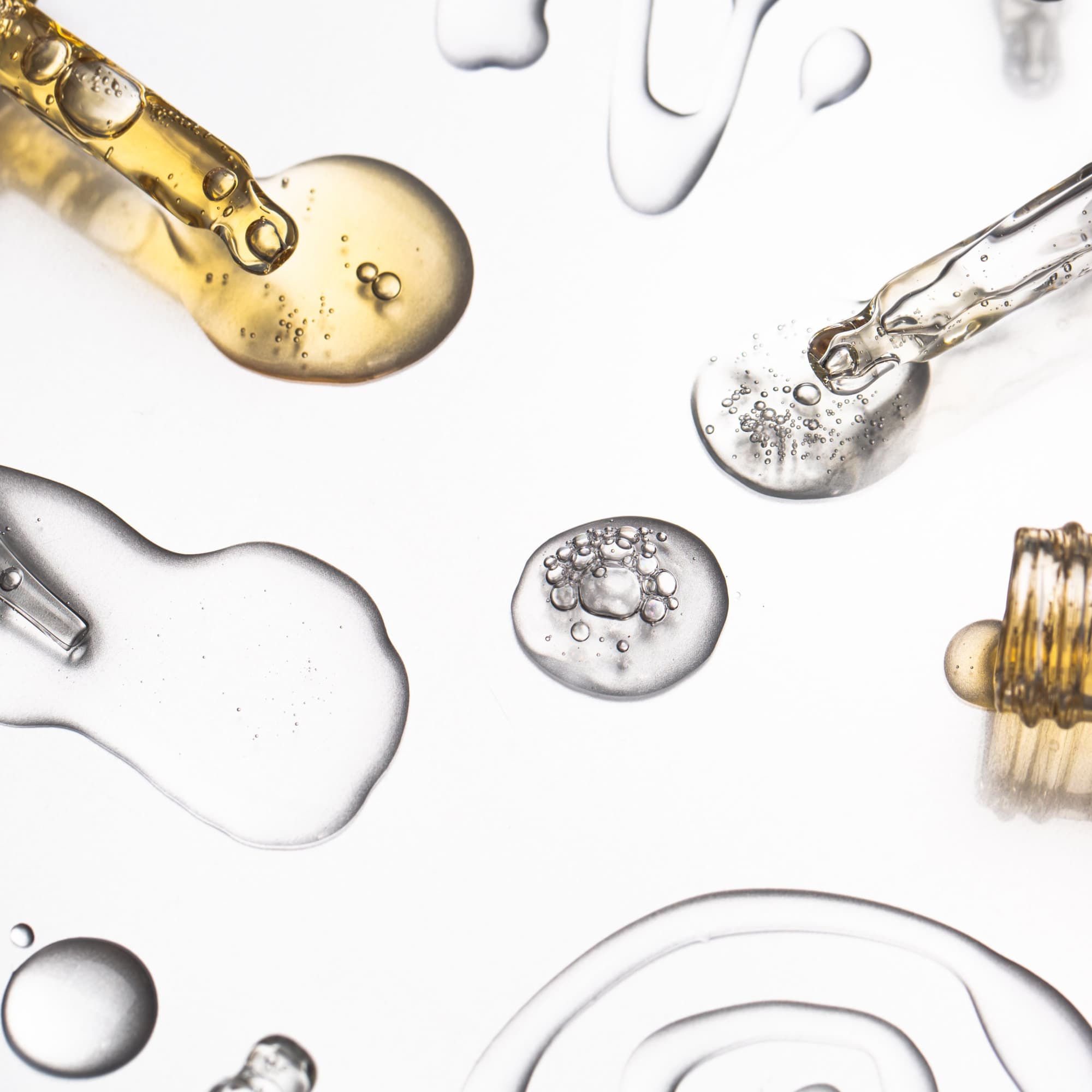
- POPSUGAR Australia
- Beauty
- A Case For Why You Shouldn’t Judge a Skincare Product Solely by Its Ingredient List
A Case For Why You Shouldn’t Judge a Skincare Product Solely by Its Ingredient List

Being able to decode the back of a skin-care product is basically becoming the modern-day, beauty industry equivalent of being able to decode the World War II Enigma machine. The obsession with deciphering complex ingredient names, percentages, and concentrations is ever-growing. There are even Facebook groups where people post nothing but skin-care product ingredient lists to ask other people (who don’t have any cosmetic or scientific qualifications) if these particular products are “safe” or not.
This fixation with dissecting ingredient lists has led to increasing generalisations and labelling ingredients as either “good” or “bad,” which, in turn, adds to the increasing misinformation within the skin-care industry. In some cases, brands have even reformulated products with less sophisticated ingredient combinations as a result of consumer requests from the misinterpretation of ingredient lists.
In reality, ingredient lists (also referred to as INCI lists) can give someone a glimpse of the type of product they’re purchasing, but there’s a lot of information that isn’t included on that teeny label. “An ingredient list is just a very small piece of a very large puzzle”, said cosmetic chemist Esther Olu. Echoing this sentiment, Sarah Chapman, facialist and Skinesis founder, said that “ingredient lists won’t tell the full story” – agreed and herein lies the big problem.
Judging a product solely by its INCI list can lead to sweeping generalizations about skin-care products that aren’t science-based and can often be false – and that misinformation then get disseminated throughout social media and deemed as true by other consumers. Here, with the help of cosmetic chemists, a brand founder, and a dermatologist, we make a case for ingredient lists not being the be-all and end-all when it comes to deciding whether to purchase or use a particular skin-care product.
Skin-Care Product Ingredient Lists Only Tell You So Much
Believe it or not, consumers aren’t necessarily supposed to be able to decipher every aspect of an ingredient list, nor are they written to be decoded as such. They’re primarily a regulatory requirement. “The ingredients list just tells you what’s in it, in roughly descending order, but not much else,” said Sydney-based science educator and content creator, Michelle Wong. Cosmetic formulation is a profession, which someone studies for years to master in order to make products more effective for consumers; not to cause purposeful irritation or be deceitful. “If we could all easily formulate elegant, effective products, we wouldn’t need skin-care product companies,” said board-certified dermatologist Aegean Chan, MD. “To the nonchemistry trained layperson, there are a lot of fundamental chemical nomenclature and concepts to learn in order to accurately interpret what is listed and why it was included in the formula.”
“An ingredient list is just a very small piece of a very large puzzle.”
Dr. Chan provides a great analogy: an ingredient list is similar to reading a recipe; it tells you what’s in the dish but doesn’t really give you a sense of how it will taste. “You wouldn’t eat raw egg, a spoonful of vanilla essence, or a stick of butter on its own, but when it’s all mixed together, it’s a delicious chocolate chip cookie.” A recipe, or in this case an ingredient list, can give the regular, nonchemist consumer an indication of what to expect from a product but doesn’t give the complete picture of how it will affect and act on their skin.
One of the biggest misconceptions with ingredient lists is that the higher up an ingredient is on the INCI list, the more of that ingredient that product contains. But that’s only true to a certain extent. Ingredients above the one percent line are listed in descending order of concentration. However, once you get to the one percent line and below, the ingredients can be randomized in any way a brand deems necessary (exceptions are colourants which are always listed last),” said Olu. An ingredient doesn’t have to be listed in the first or second line to be an effective ingredient. Dr. Chan explained that certain ingredients like antioxidants, niacinamide, and retinoids are actually effective at a low percentage and would be included lower down on the INCI list.
As Olu and Wong point out, there are plenty of other things an ingredient list doesn’t tell a consumer. These include (but are not limited to), what the product is, the concentration of each ingredient (unless the ingredient is active), how much of the ingredient there is, how the ingredients are formulated together, if there is any special technology or innovation used, the grade of an ingredient, and where the brand sources its ingredients. These are things that take scientific degrees and PHDs to understand.
Of Course, Reading an Ingredient Can Be Important in Some Instances
Having said that, an ingredient list does, of course, have its uses. All of the experts we spoke to agreed that spending time quickly scanning the INCI list is helpful if you have a specific allergy or sensitivity to an ingredient such as essential oils or fragrance. “There are a few instances that I do advise patients to review ingredient lists,” said Dr. Chan. “If you have a known allergy to a particular ingredient, and you need to avoid it, ingredient lists are a good place to start.”
In addition to allergies and sensitivities, if you have an interest in cosmetic science, go forth and read. “If you want to spend time learning about certain ingredients and formulation, it’s wonderful that the information is widely available,” said Dr. Chan. “But I do think that there’s a sense that if you don’t read the ingredients, the product will harm you, which isn’t the case.”
Someone may also want to look at some key ingredients in the INCI list to see what benefits they may get from it. For example, an alpha-hydroxy acid suggests something exfoliating, whereas glycerin and ceramides suggest that the product will be moisturising.
None of this is to say not to ask brands questions and be intrigued by products before purchasing. “All queries are welcome,” said Chapman.
Relying Solely on an Ingredient List Can Lead to Misinformation
Although an ingredient list is a good initial indicator of what to expect with a product, over-relying on it can lead to potential misinterpretation and even misinformation about skin-care products. “Ingredient lists have valuable information, but taking them too seriously and over-relying on them can definitely lead to hasty judgements about products and misinformation,” said Wong. This can lead to writing a product off or labelling it as “bad”, even though the INCI list isn’t indicative of the performance of a product on the skin.
In this case, consumers interpreting ingredient lists rely on “simplistic, hard-and-fast rules”, said Dr. Chan. This may include assuming that the first five ingredients listed are the only ones that matter (which isn’t the case), and that ingredients like parabens and sodium lauryl sulphate (SLS) are irritating, which again, isn’t strictly true in all cases. “Parabens are demonstrably safe and effective at concentrations below 0.8 percent, which is not information available on the ingredient list,” said Chan. (In 2005, the FDA came to the conclusion that there is not enough evidence to be concerned about parabens use in cosmetics due to the concentration levels.)
SLS is irritating at 100 percent but not irritating at lower concentrations. If someone sees alcohol listed in the ingredients, for example, they may misinterpret it to be drying. This can, in turn, lead to a lot of fear-mongering, which is why it’s important that cosmetic chemistry and toxicology are vital in the conversations to avoid assumptions.
If you do end up following these hard and fast rules, especially if you don’t have sensitized skin, you might be missing out on some great products that deliver excellent results. And in some cases, avoiding “chemicals” and instead opting for products that are heavy in essential oils for example, may cause greater irritation – especially for skin conditions such as rosacea.
And remember, just because you can’t pronounce a word, doesn’t mean it’s bad for you, and you shouldn’t feel bad if you can’t pronounce a word on the back of a product – that’s what the scientists are here for. “There is a pervasive myth that anything you can’t pronounce is bad for you, which is fear-mongering at its worst,” said Chan.
When It Comes to Skin-Care Product Formulations, It’s All About Nuance
Like a lot of things in most industries, but definitely in beauty (and even more so in the skin-care industry), understanding the subtle differences and details is key, and sadly an ingredient list cannot tell you the nuances of a formula. Because of this, many ingredients are vilified due to lack of scientific understanding and small, misinterpreted studies.
As previously mentioned, parabens get a bad reputation but play an important role in stabilizing products, which is very important because mouldy products are not good for the skin, not to mention a bit gross. Because of this, Dr. Chan explained that some formulations have been altered to replace parabens with an ingredient called methylchloroisothiazolinone, which although is still completely safe, it doesn’t work as well as parabens in terms of preservation, shortening the shelf life of many products. It’s also said to potentially have a higher rate of allergenicity, Dr. Chan said. The same can be said for sulphates and silicones, which have been deemed as entirely bad and something to be avoided, leading to brands labelling “free-from” on their packaging.
The nuances and intricacies of alcohol in formulations also get lost in the misinterpretation of ingredient lists. “A lack of understanding has led to the vilification of all alcohols,” said Dr. Chan. “Some alcohols do dry out the skin, but others, like cetyl alcohol, don’t dry out the skin and function as a thickener and emulsifier,” she added. Similarly, Wong gave the example of dimethicone, which is a family of ingredients that can have very different textures; an ingredient list can’t tell you what these are. All of these ingredients play an important role in formulation for texture, function, and preservation.
“Ingredient lists have valuable information, but taking them too seriously and over-relying on them can definitely lead to hasty judgements about products and misinformation.”
Aside from ingredients being deemed as bad, it’s important to look at the whole picture with the same ingredient in two different products. Not every product is made equal (how boring would that be?), and the differences between how an ingredient performs can even come down to packaging. Chapman made the good point that if the correct delivery system isn’t in place with a product containing an unstable ingredient such as vitamin C, if it’s in a jar it can quickly oxidize and become ineffective, whereas if it’s housed in an opaque, airtight container, it won’t. An ingredient list can only tell you vitamin C is present but not its delivery system or its packaging.
The bottom line? Ingredient lists can only tell you so much. They shouldn’t be a be-all and end-all of your decision, especially if you aren’t trained in cosmetic chemistry. Cosmetic regulations have a duty of care to their consumers. As Dr. Chan said: There are already many very real dangers in life that I think the risks of not examining ingredient lists are relatively low.


